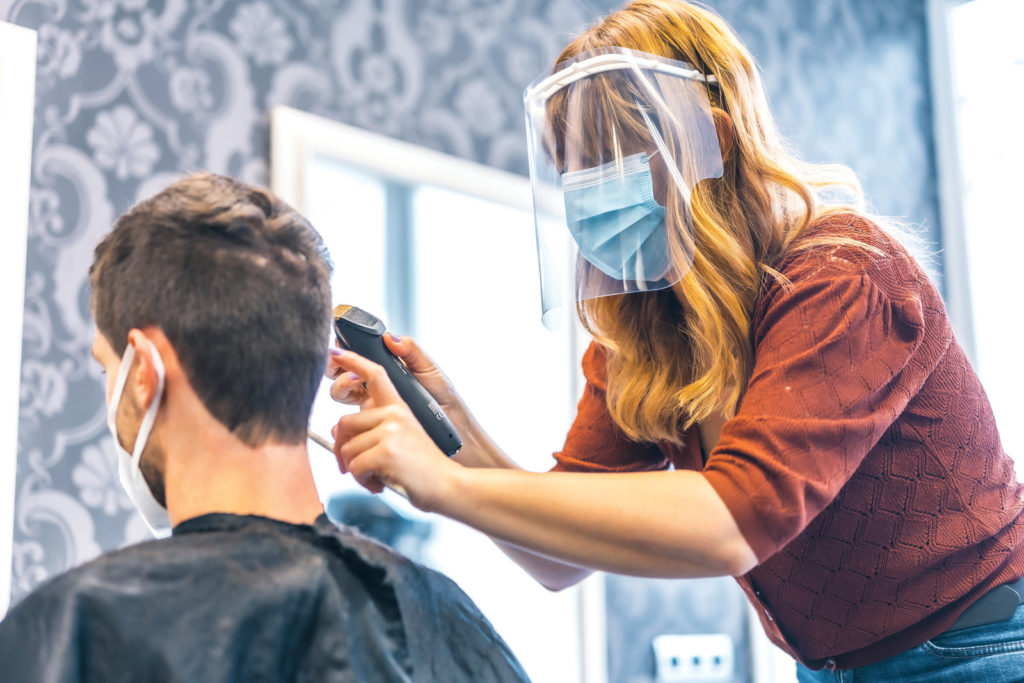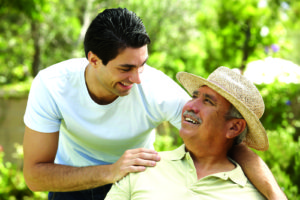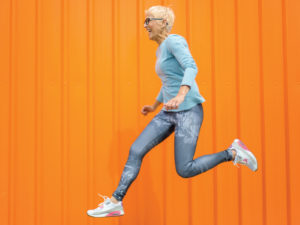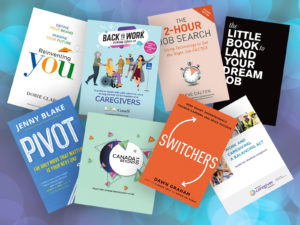BY KEVIN SPURGAITIS
What employers need to know about bringing people back to work, including employees with disabilities.
As Canadians continue to address the great challenges of COVID-19, many employers are working to remove the barriers that affect the employees who are among the one in five Canadians living with a disability, many of whom are at a higher risk of contracting the coronavirus.
But, according to the federal government, mitigating the impact of COVID-19 on Canadians and businesses will be a “step–by–step process that could be as long as 18 to 24 months.”
In our “new normal,” experts agree organizations should focus on “workplace flexibility,” a way of thinking that benefits both the company and all employees. Ultimately, in this time of crisis, the country has an unexpected opportunity to make lasting changes that respect the rights and dignity of people with disabilities. As well, we have the chance to improve overall working life during—and after—the pandemic.
In a statement, the Chartered Professionals in Human Resources (CPHR Canada) says that employers, in fact, have a statutory duty of care— not to mention a “moral responsibility”—for people’s health and safety during the COVID-19 crisis.
CPHR continues by suggesting a number of ways for employers to do the “right” things.
- Employers must keep up to date with the latest public health advice.
- Managers should be prepared to refer employees who are concerned about infection to official and expert medical sources.
- Companies would be wise to reassure employees who have COVID-19 concerns by utilizing an internal communication strategy to keep management and workers well informed of organizational policies to keep them safe, and contingency plans for employees who have been in contact with an infected person or get sick themselves.

CPHR’s guidance also includes encouraging employers to, “Understand that some people may have real concerns about catching the virus, while others may have worries about family or friends stranded abroad or working on the frontlines, such as healthcare workers. It’s important to strike the balance between your organization and its people being prepared for the spread of the virus while discouraging irrational panic with relevant information.” Of course, there’s always a chance the virus will continue to spread and prompt a “second wave,” so the association also suggests that businesses should prepare to “step up the level of support you provide to staff and adjust your resourcing plans accordingly.”
All employers are also advised by CPHR to evaluate their sick policies and provide guidance to employees and managers on how these will be applied to COVID-19 scenarios: “Ensure that line managers are regularly informed about the organization’s contingency plans and how to discuss the situation with any concerned employees, and where to direct people for further advice or support, including employee assistance programs or counselling if they are anxious. If your operations are severely affected, consider introducing a voluntary special leave policy on a temporary basis whereby individuals can opt to take paid or unpaid leave.”
In addition, CPHR’s pandemic recommendations remind employers to address the needs of specific groups of employees who may be more vulnerable as a result of a disability, pre-existing health condition or their role in caring for others. Today, more than 20 per cent of the Canadian population over the age of 15 has at least one disability, which means that a sizeable portion of each organization’s workforce will include individuals who may be at increased risk should they contract the virus.
Similarly, the Institute for Work & Health (IWH) has been advocating for an inclusive and equitable response to the pandemic, suggesting the financial hardship of the pandemic has had gradations of severity, particularly for people with disabilities, their caregivers and their families. “[COVID-19] has put a light onto a lot of issues in our society…and there’s a concern, in general, that disparities might increase,” says Dr. Emile Tompa, a senior scientist at the IWH and the head of the Centre for Research on Work Disability Policy (CRWDP).
Recently, Tompa hosted a federal-provincial policy roundtable related to the Disability and Work in Canada Strategy, which the CRWDP played a significant role in developing. He also chaired the technical committee behind the recently released CSA Group Work Disability Management Systems Standard. The standard also addresses issues like COVID-19, as it relates to accessibility planning and work accommodation.
Tompa says he is pleased with governments and organizations that have been trying to put disability into everything they do: “It’s about building up management systems within organizations to help them do a better job in accommodating workers’ health needs as they arise,” Tompa explains. “It’s also important that they be cognizant of workforce needs beyond the front end of the [opening up, recruiting, hiring and onboarding] process, right over the life course of a person’s engagement in the labor market.” He also insists that there’s not a lot of time and hard costs involved with making most accommodations, even when solutions are “customized” and deployed on a “case-by-case basis.” Take flexible work schedules, for instance, he says: “They cost nothing. With good planning and communication, employees can be creative in how they engage with their work. Everything doesn’t need to be on site.”
COVID-19 does, according to Tompa, have an upside. It has introduced Canadians to what many people with disabilities must confront every single day and encouraged new learning and new flexibility. Workplace measures accommodating people who have disabilities, who are immunocompromised, or who live with a mental illness may have been dismissed as too cumbersome or costly in the past. But facilitating the inclusion of people with different expertise and perspectives is now considered the most ethical and economical way to do business.
Tompa is now leading a COVID-19 impact study, which is in its early stages of development in partnership with disability community organizations. His final tip for employers in both the private and non-profit sectors is to be patient, “creative” about solutions and open to more “learning.”
“[COVID-19] broadens the obligations of employers, and that’s scary when they’re already struggling to survive in a globalized competitive economy,” he suggests. “But it’s the only way to go. … If you have an open mind today, you’ll be stronger for it at the end [of the pandemic].”

Greater risk
COVID-19 leads to a respiratory type infection that is mild for roughly 80 per cent of the population. But it can be more severe for older adults or those with chronic underlying conditions. Some people with a disability may not have a high risk of getting COVID-19 or becoming severely ill if they do contract the virus. However, experts suggest they might be at
a higher risk of infection or severe illness because of their age; underlying medical conditions, like diabetes, asthma and chronic lung disease; or their disability, itself, which could place them at greater risk of being exposed and acquiring the infection.

Case Study #1: Variety Village
Reopening plans are no less thorough for Karen Stintz, Variety Village’s president and CEO. As a social enterprise, Variety Village offers a number of life skills and integrated sports programs that support children and adults living with disabilities.
Prior to being shut down on March 15 by the pandemic, Variety Village, a 179,000-square–foot recreation facility, had 6,000 members and operated programs throughout the day for a variety of constituency groups. For example: In the morning, throughout the day and in the evenings VV offered programs aimed at young adults with intellectual disabilities and individuals in rehabilitation, as well as older adults and elite athletes from a local high school. In the evening, it offered recreational programs focussed on children with disabilities and athlete training.
Stintz and her board are moving cautiously. “We are continuing to plan our day camps for children under 16 in July. During a typical summer, we would have at least 200 children per week. Unfortunately, this year, we are planning camps to half of that number of children. For our first week of camp, only 30 children are currently registered. It’s a big change for us as we normally have a full house with lots of activities and a cleaning company that cleans the building after hours. However, without the facility open we can’t afford the monthly fee for that service [$25,000] this summer so our management team will take on cleaning and disinfecting tasks as part of our duties.”
Staff will also be implementing protocols for social distancing and screening. Variety Village is also making personal protective equipment (PPE) available and requiring all employees who have interaction with the public to wear it at all times. Stinz tells us that staff have the option of using protective shields instead of facemasks if they feel it will help them communicate more easily with the children in their programs.
She also underscores the need for non-profit organizations to make accommodations for employees and counsellors during this time—even if the “the numbers of individuals who are being served will be quite low.”
Fifty per cent of children with a disability say they have no friends so, “It is very important that we are able to offer services for those who rely on Variety Village for social connections and activities, says Stinz, who adds that, “The self-isolation that we have all experienced for a few months is a regular state of being for many children living with a disability and their families. So, while its critical that organizations that serve those with a disability be permitted to reopen, we have a responsibility to make sure it is safe. Most of the children and adults coming to Variety Village are a high–needs constituency before COVID-19. Their personal challenges have stayed the same but now their potential health risks have increased.”

Case Study #2: Royal Bank
The health and safety of employees and clients has been our “top priority throughout the pandemic,” according to a spokesperson for RBC. During the lockdown, the organization supported employees in a number of creative ways, including enabling more than 75,000 of them to handle diverse roles through technology solutions, allowing them to work from home. Communication specialists set up a centralized hub online to distribute COVID-19 updates, FAQs, and advisories, as well as helpful resources and support programs for working from home. In addition to conducting a series of employee well-being surveys, HR organized a series of virtual town halls with RBC’s CEO and senior leaders to keep staff across the country in the loop.
As a precursor to welcoming back its workforce, the bank has created new onboarding and training programs that are 100 per cent digital for the 1,400 summer students who are taking on roles across the company. Moving forward, each location will continue to undertake extra sanitation and cleaning measures, while ensuring physical distancing, for all employees working in central and regional offices as well as branch locations.

Kevin Spurgaitis is a Toronto-based writer interested in ethics and public health issues.





